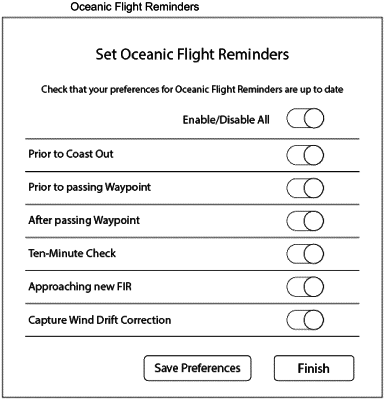| CPC G01C 21/20 (2013.01) [B64D 45/00 (2013.01); G06F 16/29 (2019.01)] | 22 Claims |

|
1. A flight navigation tool for use in aircraft cockpits comprising:
a tablet computer having a GPS receiver and a memory system incorporating nonvolatile memory;
the nonvolatile memory having recorded therein a flight navigation routine, an aviation database comprising international operating rules comprising transoceanic flight rules, and machine-readable code configured to display portions of the international operating rules upon demand;
a moving-map database configured with tracks, coastal airport identifiers and locations, predefined routes, and predefined reporting point locations for transoceanic operations;
machine readable code configured to read a current location from the GPS receiver, and to indicate the current location on a moving map display representing a portion of the moving-map database; and
a trip database, and machine readable code configured to interface with a user with a touchscreen and to use a method selected from the group consisting of direct entry of waypoint coordinates or names and selection of predefined tracks to configure the trip database with a planned transoceanic route for an individual flight;
further comprising machine readable code adapted to provide pilots with a heading and next-waypoint timing for a rhumb-line route from a location where the GPS receiver fails to a next waypoint of a currently active route.
|